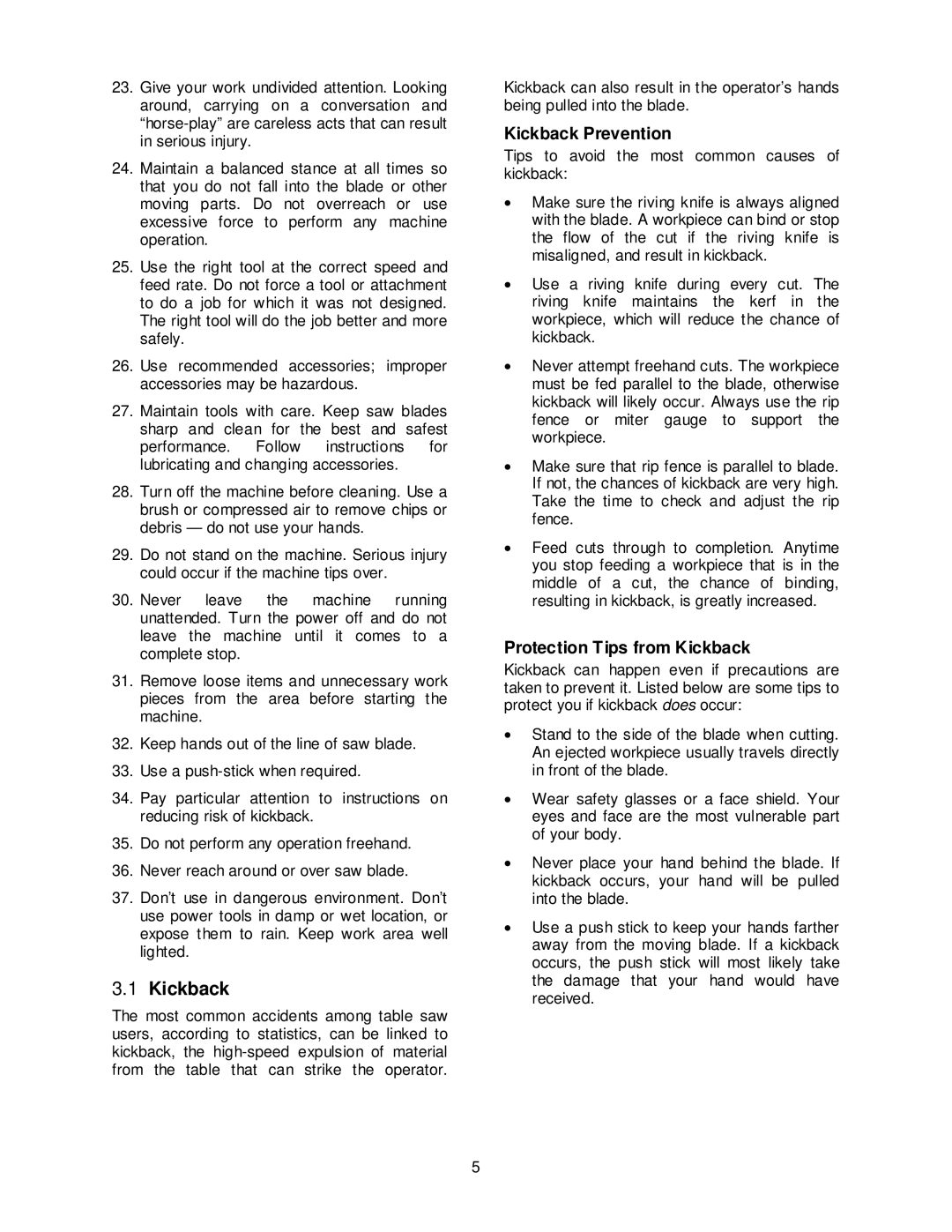23.Give your work undivided attention. Looking around, carrying on a conversation and
24.Maintain a balanced stance at all times so that you do not fall into the blade or other moving parts. Do not overreach or use excessive force to perform any machine operation.
25.Use the right tool at the correct speed and feed rate. Do not force a tool or attachment to do a job for which it was not designed. The right tool will do the job better and more safely.
26.Use recommended accessories; improper accessories may be hazardous.
27.Maintain tools with care. Keep saw blades sharp and clean for the best and safest performance. Follow instructions for lubricating and changing accessories.
28.Turn off the machine before cleaning. Use a brush or compressed air to remove chips or debris — do not use your hands.
29.Do not stand on the machine. Serious injury could occur if the machine tips over.
30.Never leave the machine running unattended. Turn the power off and do not leave the machine until it comes to a complete stop.
31.Remove loose items and unnecessary work pieces from the area before starting the machine.
32.Keep hands out of the line of saw blade.
33.Use a
34.Pay particular attention to instructions on reducing risk of kickback.
35.Do not perform any operation freehand.
36.Never reach around or over saw blade.
37.Don’t use in dangerous environment. Don’t use power tools in damp or wet location, or expose them to rain. Keep work area well lighted.
3.1Kickback
The most common accidents among table saw users, according to statistics, can be linked to kickback, the
Kickback can also result in the operator’s hands being pulled into the blade.
Kickback Prevention
Tips to avoid the most common causes of kickback:
•Make sure the riving knife is always aligned with the blade. A workpiece can bind or stop the flow of the cut if the riving knife is misaligned, and result in kickback.
•Use a riving knife during every cut. The riving knife maintains the kerf in the workpiece, which will reduce the chance of kickback.
•Never attempt freehand cuts. The workpiece must be fed parallel to the blade, otherwise kickback will likely occur. Always use the rip fence or miter gauge to support the workpiece.
•Make sure that rip fence is parallel to blade. If not, the chances of kickback are very high. Take the time to check and adjust the rip fence.
•Feed cuts through to completion. Anytime you stop feeding a workpiece that is in the middle of a cut, the chance of binding, resulting in kickback, is greatly increased.
Protection Tips from Kickback
Kickback can happen even if precautions are taken to prevent it. Listed below are some tips to protect you if kickback does occur:
•Stand to the side of the blade when cutting. An ejected workpiece usually travels directly in front of the blade.
•Wear safety glasses or a face shield. Your eyes and face are the most vulnerable part of your body.
•Never place your hand behind the blade. If kickback occurs, your hand will be pulled into the blade.
•Use a push stick to keep your hands farther away from the moving blade. If a kickback occurs, the push stick will most likely take the damage that your hand would have received.
5
